
Adolf Hitler and the Army of Mankind

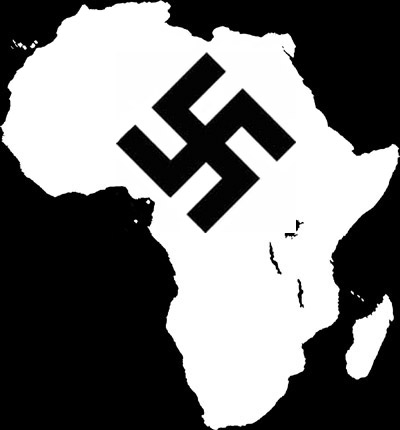

Adolf Hitler and the Army of Mankind


Divide and conquer. Sow discord. Confuse with chaos and conflict. Our enemies are masters of these evils.
Our sleep is the sleep of death. Our throats are being cut while we dream of impossibly distant freedoms. Our chains, built link by link since our birth, are those of the mind. Every link is a different lie. The invisible chains are the strongest.
As Saint Corneliu Codreanu said:
So what is the key? Realizing who the real enemy is. Realizing that we are all trapped together in this cauldron of poverty, violence, despair, boredom, aimlessness, confusion, cheap desires, drugs and a host of other artificial human ills. Our so-called 'democracy' is rich in such distractions.
It's simple to look at who holds the reins of this mad world. Who holds the money. The media. The governments. This despicable group of petty little criminals are not alone in their crimes against humankind. We must realize that they have found eager helpers in ALL races. These puppets -these sell-outs- are far more dangerous than their masters.
Let's listen to the golden wisdom of Saint Corneliu Codreanu once more:
The races can live in peace. Respect one another. Work together. And ultimately reach for the stars together.
But not stuck together in an unnatural environment designed to destroy us all. And in the case of the white races, bring us to total extinction. Learned men, whose eyes glisten with truth and courage, see the enemies' poisonous designs. They are no longer hidden. And they are everywhere.
World enslavement awaits the human race. Serpents outnumber saints. Deathly snoring echoes throughout our bleeding lands.
They've robbed us of a worthy life. They've stolen contentment and destroyed our potentials. Would-be scientists work at convenience stores, philosophers are janitors, brilliant minds are snuffed out with criminality. Dead end jobs and dead end lives. No way out. It's the story of millions. The song of ALL races under their whip.
At best we can be a good little slave and enter their system of financial slavery. Live empty lives pursuing empty dreams. No goals beyond the shallow pursuit of money, objects and instant gratification.
But, if WWII taught us anything, it taught us that we can work together. We can turn ourselves from cellmates to soldiers. Our different skin colors will be covered with uniforms anyway, all bearing the eagle and swastika on our chests and in our hearts!
Adolf Hitler showed us the way. The rest is up to us comrades.
Our time has come, and it is now!
'Anyone wishing to conquer a people could do it by using this system: Breaking its ties with heaven and land, introducing fratricidal quarrels and fights, promoting immorality and licentiousness, by material ruin, physical poisoning, drunkenness. All these destroy a nation more than being blasted by thousands of cannons or bombed by thousands of airplanes.'
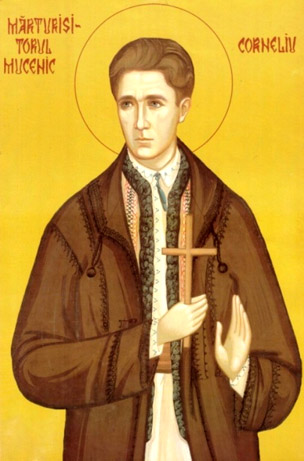
'If I had but one bullet and were faced by both an enemy and a traitor, I would let the traitor have it.'
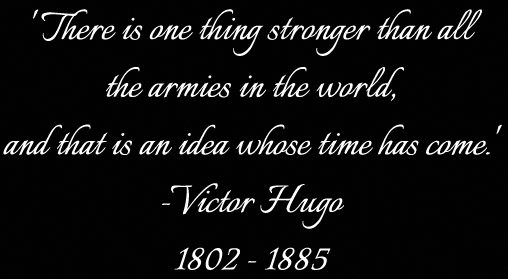
[Above: 'We'll never capitulate!'
'Democratic and capitalist leadership in America has just one real peacetime concern, to stabilize stagnation. Thus, they hope to avert revolution. The values of democracy and capitalism are no longer credible because their mechanics are no longer workable. To defend a democracy controlled by an alien elite means to die not for your future but for theirs... a new spirit of Folk consciousness is leading us out of stagnation along the path of revolution. The wise men and social scientists of the democracies have not understood this. Adolf Hitler has understood this.'
Many influential African American leaders were hoping to form an alliance with Japan, including Marcus Garvey, Booker T. Washington and W.E.B. DuBois. A representative of Japan's 'Negro Propaganda Operations' traveled to the United States during the 1920s and 1930s to meet with W.E.B. Du Bois. Du Bois was impressed with Imperial Japan's racial policies. In 1936 the Japanese ambassador even arranged for Du Bois to visit Japan.
[Above: Symbol of the Black Dragon Society]
The Black Dragon Society (also known as Amur River Society) was an ultranationalist paramilitary organization in Japan and they had secret agents that came to America and were an influence to Black nationalist groups. Satohata Takahashi was a key figure in the Black Dragon Society in America and founded the 'Society for the Development of Our Own' in Detroit. The Black Dragon Society was suspected of being associated with the black Muslims. They are said to have even influenced the Nation of Islam. The suspicion of their collaboration led to the arrest of the Honorable Elijah Muhammad during World War II.
[Above: Honorable Elijah Muhammad.]
[Above: The Great Japanese Turan Youth League (Dai Nihon Turan Seinen Renmei). Note the blacks dressed in traditional Japanese clothing.]
The following is an excerpt from an article in Black Scholar (Vol. 24 No. 1):
'Mr. Takahashi's initial organizing activities in Detroit, Chicago and St. Louis, and the "ripple of effects" there from, led to the messianic expectation on the part of tens of thousands of African Americans throughout the Midwest, the upper and lower Mississippi Delta, east–central Oklahoma and the New York-New Jersey region that Japan's imperial army would free them from the ravages of American racism.'
There was also a Time Magazine article about the 1942 arrest of over 100 pro-Japanese Black activists, titled 'Takahashi's Blacks'.
A popular publication of the time 'The People's Voice' reported that Japan had a 'BB Plan' which consisted of 'Black Followers of Buddhism [which] preached Buddhism as the religion of people of color the world over [and] the key to racial success... Under the BB Plan, American Negroes who became Buddhists automatically won Japanese citizenship would get chances to visit Japan, study sciences and professions, receive military and naval training... Success of the plan would mean establishment of a black empire in Africa...'
The FBI had estimates in the 1940s of up to 100,000 African American members in pro-Japanese organizations in the U.S, while one African American leader, David D. Erwin, claimed that the membership numbers could possibly be up to a million! There was even talk of a black uprising if the Japanese were to attack America.
'We were the first Fascists, when we had 100,000 disciplined men, and were training children, Mussolini was still an unknown. Mussolini copied our Fascism.'
[Above: Marcus Mosiah Garvey, Jr.]
[Above: Marcus Mosiah Garvey, Jr.]
Garvey was born in St. Ann's Bay, Jamaica to a father who worked as a bricklayer and a mother who worked as a maid. He was the youngest of eleven children and sadly only two others, Marcus Jr., and his sister named Indiana, survived to adulthood. Garvey's father had an extensive library and he learned to love reading and grew to be a very educated and intelligent man. In 1910 Garvey left Jamaica and traveled throughout Central America. During this time he worked on a plantation as a time keeper and also found jobs with local newspapers. It was at this point in his life that he became interested in the destiny of Africans all over the world. He combined the ideals of Booker T. Washington's economic nationalist ideas and Pan-Africanists.
Marcus Garvey briefly moved back to Jamaica before leaving to go to college in London where he studied law and philosophy. After two years abroad Garvey returned to Jamaica in 1914 and organized the Universal Negro Improvement Association (UNIA). After having corresponded with Booker T. Washington he decided to travel to the United States and meet with other black leaders. He ended up moving to the United States that same year and began doing speaking tours. He supported himself by finding a job as a printer in New York.
[Above: Marcus Mosiah Garvey, Jr.]
In 1917 Garvey joined with thirteen others to form the first UNIA division outside of Jamaica. Their goals remained the same, to promote and advance social, economic and political freedom for people of African ancestry. From 1918 to 1920 Garvey accepted no pay as the editor of the successful newspaper 'Negro World'. The newspaper helped to promote the ideals of the UNIA.
By 1919 the UNIA had a large support base with as many as 2 million members! Garvey had such great support and admiration in Jamaica that he became one of Jamaica's most influential figures of the 20th century. His face even appears on the coins of Jamaica. That year the UNIA held a convention in Madison Square Garden in New York City that attracted 50,000 people and also had representatives from the Universal Black Cross Nurses, the Universal African Legion, the Black Eagle Flying Corps and more.
Marcus Garvey's ideas became so popularized that they became known as 'Garveyism'. Garveyism became the movement that inspired the idea of African Redemption -- the idea that Africans could return to Africa and build a great civilization without anyone but Africans involved. It was a movement of pride and independence. It was the idea that each race can be independent of one another, for the people to be able to be ruled by someone of their own race and to understand that this would apply to other races as well. Garveyism influenced the Nation of Islam, which is of course very popular today. Marcus Garvey believed that Europeans should leave Africa and Africans should leave European countries. This is where the Black Star Line came into place, of which Garvey was the President. The line's name was a play on the large shipping line of the day called White Star Line, of which included the very famous ship, the Titanic. The Black Star Line's stocks were doing well when a grand miscarriage of justice occurred. Garvey was accused and convicted of mail fraud! Even his followers who had bought stock in the company thought that the charges were bogus. Garvey believed that the charges were brought against him due to a meeting he had with the KKK in June 1922.
In Atlanta, Georgia Garvey had meetings with Edward Young Clarke, Acting Imperial Wizard of the Klan. Clarke and Garvey found common ground, with Clarke expressing sympathy for Garvey's cause. Although not much is known about what became of this meeting, Garvey did say: 'Between the Ku Klux Klan and the NAACP, give me the Klan for their honesty of purpose towards the Negro. They are better friends to my race, for telling us who they are, and what they mean, thereby giving us a chance to stir for ourselves.'
Jewish political objection to this meeting came down on Garvey in the form of ruining the Black Star Line economically, as is often done. Their greatest fear is the white man and the black man finding common purpose.
[Above: Header of a Black Star Line stock certificate, circa 1919/1920.]
[Above: The SS Yarmouth, The Black Star Line, New York City, 1923.]
[Above: Newspaper article.]
On June 23, 1923 Garvey was sentenced to the maximum of five years in prison. Garvey knew with certainty that his conviction was politically motivated because of the actions of the Jewish jurors and the Jewish judge Julian Mack. In 1928, Garvey told a journalist: "When they wanted to get me they had a Jewish judge try me, and a Jewish prosecutor. I would have been freed but two Jews on the jury held out against me ten hours and succeeded in convicting me, whereupon the Jewish judge gave me the maximum penalty."
After serving his unjust sentence Garvey was then deported from 'the land of democracy' for his political ideas. Apparently there were powerful people in this 'free' country that didn't want black and white people to come together with a mutual understanding of how we could finally share this world peacefully. They also despised his staunch anti-communist views. This is certainly a backwards and unfair world we live in.
Marcus Garvey spent the rest of his life fighting for the rights of his people. He admired what Adolf Hitler and Benito Mussolini were doing for their countries and their people. He believed in these revolutionary political systems that were created to uplift their people. In 1937 he stated in a London interview with Joel A. Rogers that his brand of fascism preceded that of Mussolini and Hitler, saying, "We were the first Fascists... when we had 100,000 disciplined men, and were training children, Mussolini was still an unknown. Mussolini copied our Fascism."
Garvey ended up moving to London and it was there that Marcus Mosiah Garvey, Jr. died on June 10, 1940 at the age of 52.
[Above: Carlos A. Cooks.]
'One Cause, One Goal, One Destiny'
He was jailed and given the choice of continued jail time, deportation or the army. He chose the army. According to a book by Robert Harris and Nyota Harris called 'Carlos Cooks and Black nationalism from Garvey to Malcolm', Cooks was sent to the frontlines into a combat mortality zone without training or orientation! By luck and intellect he survived even though the New York City press had reported his death. Very shady stuff indeed.
After returning to the United States Carlos Cooks desired to resurrect the African Nationalist Pioneer Movement, however there were several Black nationalist groups who wished for him to join them. He chose to join the Universal African Nationalist Movement and became its field organizer. He gave speeches that encouraged his people to unite and uplift their race. He advocated for a 'Buy Black' movement, encouraging blacks to buy from black shopkeepers. He started the 'Nationalist Social Club' for black youths. It encouraged the youth to fraternize amongst other black youths and to find solutions to the problems in their racial community. It led them away from violence and crime and gave them jobs. It also promoted them to strive for self-determination in the world. It sounded like a great group for kids in Harlem to join. He also was a key voice in showing blacks that natural was beautiful, and thought that black women need not straighten their hair or wear wigs to try to look like something they were not.
Carlos Cooks wanted Africa to be for Africans, and all other races to have their own space. He wanted Africans to rule over their own people, and the same for other races. He went to lobby Congress in Washington D.C. in order to start a movement where blacks could repatriate themselves to their homeland in Africa. It resulted in the 'Langer Bill of Repatriation'. The government would not create a program but said they would help the efforts if the people created the program. Unfortunately integrationist pressure was strong and not much happened with the program.
Cooks returned and began to hold mass rallies and gained support for an African Colonization Society. At this point the leaders of the group Cooks was a member of brought in a Jewish communist to 'help' the group. Cooks was absolutely against the idea of allowing a member of another race be involved in their strive for self-determination. It was absurd. He was expelled from the group when the other leaders insisted on this alien to be involved in their movement. He was adamantly against communism and felt it to be alien to his people. Cooks, unbeaten by this, resurrected the African Nationalist Pioneer Movement in 1949 and brought many members of the UANM along with him.
Cooks spent his entire life working for the liberation of Africans all over the world and for their return to Africa. He sought to show Africans that they can rule themselves and could be proud of their race. These same sentiments were shared across the ocean, a world away, by Adolf Hitler.
Carlos Cooks died on May 5, 1966 in Harlem, New York.
[Above: W. E. B. Du Bois.]
[Above: W. E. B. Du Bois at his office, circa 1915.]
Du Bois was looking for a way to find independence for African Americans and people of African descent all over the world. He strongly believed that Africans should be ruled over by other Africans. He wanted to explore alternative ways to achieve this and he traveled all over the world looking for answers. In 1936 he was welcomed to National Socialist Germany where he commented that he was treated with warmth and respect. He admired the way the National Socialists had improved the economy and quality of life for the German people. He wrote that the establishment of National Socialism in Germany had been 'absolutely necessary to get the state in order.'
[Above: Even though the American postal service issued a W. E. B. Du Bois postage stamp they hide his support of the Axis. Click to see more.]
In 1937 DuBois said 'there is today, in some respects, more democracy in Germany than there has been in years past.' He strongly opposed the U.S. intervention in WW2.
[Above: Leonard Robert Obidiah Jordan]
Robert Jordan was born in Jamaica and as a young man he moved to England and later worked as a sailor for the largest Japanese steamship company. By 1920 he was living in Harlem, New York. In 1935 he visited National Socialist Germany and was greatly impressed. Afterwards Jordan sent a wire to Adolf Hitler saying that the negro people of the world were with him!
The Ethiopian Pacific Movement was founded in Harlem as a response to Italy's (not yet a member of the Axis) invasion of Ethiopia. The group did, however, feel that Japan (already aligned with National Socialist Germany), was natural allies with all colored people of the world. This didn't go unnoticed by the Japanese Empire and the group gained support from Japan. In New York the group had ties with the Christian Front, a mostly Irish-American organization that was pro-Axis and anti-communist.
In a street speech Jordan confidently stated 'We black people are with Hitler... Hitler loves us; the Axis powers are fighting our battle for us. They will take Africa from the British and give it to the Africans who deserve to have it.'
Eugene Holness (also known as Lester Holness and Lester Carey) vowed to 'fight for Japan with every drop of my blood.' He was a leader of the Ethiopia Pacific Movement, second in command behind Jordan.
The leaders of the movement (Robert Jordan, Eugene Holness, Ralph Green Best and James Thornhill) were indicted for sedition for wanting Japan to help with the establishment of a black African empire. They all were convicted with sentences ranging from six to ten years in prison, Jordan getting ten years in prison and a hefty $10,000 fine.
[Above: Mittie Gordon.]
Gordon was born in Louisiana and in 1898 she witnessed the lynching of a black man and recalled that 'Since that day, I have been the most unhappy person that ever lived.' This terrible incident made an impression on Gordon and was probably one of the reasons she became a Black nationalist. Mittie Maud Gordon had first been a member of Marcus Garvey's foundation the Universal Negro Improvement Association and African Communities League (UNIA-ACL) and was an active member in the 1920s.
When Italy invaded Ethiopia many Black nationalist groups sprang up in protest of colonialism in Africa, but Mittie's PME was the largest Black nationalist group started by a woman.
She also saw hope in the Japanese leading the liberation of the colored people of the world. She had ties to Japanese members of the Pacific Movement of the Eastern World (another Chicago-based group with Black nationalist members that saw Japan as the liberator of people of color, founded by a Japanese man), Japanese politicians and the Black Dragon Society in the 1940s. This led her to be put under surveillance by the FBI and subsequently was arrested for 'conspiring with the Japanese.' She was imprisoned for most of the duration of the war.
[Above: Undercover magazine.]
Here is an excerpt from 'Hitler and Hirohito in Harlem' -an article by John Roy Carlson in the magazine 'Undercover' in 1940:
"There'll be a Change. And it's coming Now," said a second!
'Carlos Cooks, one of the more intelligent Negro fascist leaders in Harlem, published 'The Street Speaker' - violently anti-British, anti-White, anti-Semitic – made no secret of his Axis leanings': "We feel no enmity with people of the totalitarian powers, especially Japan. Between Nazism and Democracy, I would choose Nazism. I wouldn't lift my finger to save a Jew"!
'One of the many Negro fascists Samuel W. Daniels [of 2286 Seventh Avenue] was the most frightening at close range. Asking him bluntly why he had summoned me, he said': "I'll tell you why. I want you to go to your wealthy white friends, those who feel as we do, and get their financial help so I can carry on with my work".
'After leaving him I wandered through the streets of Harlem listening to the voice of Nazism emanating from this tragic people, trying to trace the propaganda source, trying to trace the master propagandists who were encouraging political fascism in the minds of the Negro leaders. I wanted to know who was pulling the strings'.
'I did not find the answer until I met Robert Jordan [the night of September 27, 1940 – 'Battle of Britain' time]. In a neighborhood café Jordan began telling me his personal history. A West Indian by birth, forty-one years of age, he had served as a sailor with Japan's largest steam-ship company. A year prior to the 1936 Berlin Olympics, he had visited Nazi Germany. In that year he had organized the Ethiopian Pacific Movement. Inc., and proudly wired Hitler that the Negro people of the world were with him in Sein Kampf [his struggle]. On his way to Germany he had stopped in London, where he was arrested for anti-British agitation. He boasted of his personal friendship with Jawaharlal Nehru [of the All-India Congress] who had received him with open arms. Jordan was violently anti-Semitic and repeated the Nazi mouthings that the world was ruled by "International Jews"!
'The blacker the negro the finer the negro. The blacker the negro, the greater credit he is to his race....We want nationhood based exclusively on black men. The salvation of my race is religion with me. What Hitler said about the nobility of Aryans, also applies about the nobility of the negro.' - Samuel W. Daniels, black Fascist and founder of 'Negro Youth' magazine
'It was on September 23, 1940, that I first heard "Heil Hitler" shouted out in Harlem.'
'Jews are all Communists, and communism wants to exploit the negro just like the white man. I wouldn't lift a finger to save a Jew... We came here against our will. They brought us here as slaves and they've treated us as slaves. We owe nothing to America. America owes everything to us. This isn't my culture. Cooks isn't my name. This isn't my home. My home and my culture and my name are in Africa, I'm a foreigner here. I am a persecuted man here. I'm hated here. But I tell you what I am right now-I am a Black nationalist: and I want the colored people to live like colored people. I want colored people to have their own civilization, their own government, their own cities, their own officials. I want the black man to go back to Africa, and I'll back up anybody that says 'Africa for Africans.'
'One of the negroes exclaimed "Hitler's doing things because he has to. Somebody has gotta do the job and he is doin' it." [and another said] "We'll have to start all over again. Africa belongs to us and that's where we want to go. America for the Americans, Asia for the Asiatics and Africa for us Africans!"
[Above: Carl Orff.]
Carl Orff was born in Munich to a Bavarian family. He began studying music at the young age of five. He took lessons in the piano, organ and cello. Although skilled at performing, Orff soon realized that composing was what he was destined for. He entertained his family with puppet shows with music to accompany them. His creativity continued to flow throughout his childhood and into his adolescence, he even authored a short story in a children's magazine at the age of ten in 1905.
When Orff was a teenager he taught himself the art of composing without any formal instruction. He listened to the masterpieces of classical music and learned on his own. By the age 16 he had already published some of his music.
[Above: Carl Orff as a teenager.]
In 1912-14 he studied at the Munich Academy of Music. In 1916 he became the musical director of Munich Chamber Theater. The next year he joined the military. Orff served in the German Army during World War One and learned first hand the hell of trench warfare. He was badly injured and almost killed when a trench caved in.
Back in Germany after the war, Orff worked in opera houses before returning to Munich to continue his musical studies. In the early 1920s Orff began working on a revolutionary new concept which he called 'Elementare Musik' (Elemental Music) which unified dance, tone, image, poetry, design and theatrical gesture. In 1924 he founded the Günther School for gymnastics, music, and dance in Munich along with Dorothee Günther. He worked as the head of a department there, working with children and musical beginners, until the end of his life. He published the widely popular manual 'Schulwerk' in 1930 in which he teaches his method of conducting. Another way that Orff made a living was by editing 17th century operas. Neither of these made Orff a wealthy man, it wasn't until he composed the astonishingly beautiful cantata Carmina Burana that he began to be financially rewarded for his genius.
[Above: Antigona German record sleeve.]
'...we face spiritual soil-erosion when man estranges himself from the elemental and loses his balance.'
In 1935-1936, in a beautiful setting surrounded by the art and culture of National Socialism, his most beloved piece of music was composed. The lyrics of Carmina Burana are... surprising the first time you read them. They are very sexual and rather blatant. That Carmina Burana was so eagerly embraced by many National Socialists, including those in official capacity, tells a lot about their open-minded attitude toward sexuality. They most definitely were not the strict puritans some make them out to be!
Carmina Burana fast became one of the most popular musical pieces of its time and grew in popularity greatly during the 1960s. It is the first in a trilogy that Orff called 'Trionfi' (Triumphs). It is recognized internationally as one of the greatest compositions ever written. It has been in hundreds of television commercials and movies. Once you have heard Carmina Burana, you never forget its momentous beauty and power.
Carl Orff had many friends and associates in the National Socialist government and Orff accepted a commission from the mayor of Frankfurt to write the music to Shakespeare's 'A Midsummer Night's Dream'. His music replaced the music written by the Jewish composer Felix Mendelssohn. The National Socialist government understood that it was important to promote a culture with art created by the German people and not by people that had ideals foreign and destructive to their own. Orff contributed his skill for composing music to schools and worked to integrate his music teaching techniques into the Hitler Youth.
[Above: Carmina Burana ballet by Michael Smuin.]
After the war, when Germany had been bombed and burned to oblivion despite numerous pleas for peace, 'de-Nazification' began. Orff went through the ludicrous process and was eventually deemed 'acceptable' to compose music again. Orff's work with the National Socialist Party forever tainted his name in the eyes of the Jewish-controlled postwar world, however, and he never received the full fame he deserved. His masterpieces are a testament to the flourishing of the Arts under National Socialism.
[Above: Carl Orff.]
Orff died in the city of his birth, Munich, on March 29, 1982 of cancer at the age of 86. 'Summus Finis' ('The ultimate goal' which is taken from his opera 'De Temporum Fine Comoedia') is inscribed on his tombstone.
[Above: CD covers. Carmina Burana has been recorded and released in many, many different formats.]
[Above: John Boorman's masterpiece Excalibur -- Japanese movie poster.]
O Fortuna (O Fortune)
[Above: Carl Orff signature.]
[Above: Abd al-Qadir al-Husseini.]
[Above: Abd al-Qadir al-Husseini.]
Abd al-Qadir al-Husseini studied chemistry and graduated from the American University in Cairo in the early 1930s, and during this time he organized the Congress of Educated Muslims. The purpose of the congress was to fight discrimination against Palestinian Arabs in government services under the British Mandate.
Early in al-Husseini's career he worked for the British Mandate government in the settlement department, but during the 1936-1939 Arab revolt in Palestine he moved to Hebron and led the struggle against the British that were helping to oppress his people. As a member of the Palestine Arab Party (which was founded by al-Husseini's family) , al-Husseini served as the party's secretary general and was also the editor-in-chief of the party's newspaper Al-Liwa plus other papers including Al-Jami's a Al-Islamiyya.
[Above: Abd al-Qadir al-Husseini (middle).]
In 1934 Abd al-Qadir al-Husseini married and in 1940 his son was born, Faisal al-Husseini (July 17, 1940- May 31, 2001, who grew up and continued in his father's footsteps to try to free his people. He was the founder and leader of the Arab Studies Society, head of Fatah and the Palestinian Authority Minister for Jerusalem Affairs.)
Abd al-Qadir al-Husseini was exiled in 1938 and in 1939 he had to flee to Iraq and took part in the Rashid Ali al-Gaylani coup. He then moved to Egypt in 1946. His heart and fate, however, led him back to Palestine in January of 1948 to lead the Army of the Holy War.
Tragically al-Husseini was killed in the Battle of al-Qastal while personally surveying an area of Qastal Hill shrouded by fog in the early hours of April 8, 1948. It was an incredible blow to the morale of his men. He is revered today as a martyr of his people and a revolutionary of the highest order.
[Above: Mourners at Husseini's funeral gather near Sheikh Jarrah, East Jerusalem.]
[Above: This artwork, by Burhan Karkoutly, was found at the entrance of the Palestinian Consulate in Mexico. It features the images of Abd al-Qadir al-Husseini and Mexican revolutionary Emiliano Zapata. The Arabic words says:
[Above: Hasan Salama.]
In early May 1936 he was in charge of commanding the Lod, Ramla and Jaffa areas. He successfully led several military operations against the Jewish forces and their British collaborators. His men disrupted the enemy's communications by blowing up railway tracks and power poles. During one of these such operations in 1938 Hasan Salama was unfortunately wounded.
After the Arab revolt in Palestine Salama traveled to Lebanon and Syria and joined the Grand Mufti of Jerusalem Amin al-Husseini. It was at this point that Salama increased his military education and took a tank commander's course at the Military College in Iraq. He was in Iraq supporting Rashid Ali al-Gaylani with a group of 165 Palestinian fighters during the coup of 1941 and the Anglo-Iraqi War that followed.
[Above: Salama with rifle in hand and on horseback during the uprising in Mandatory Palestine, 1939.]
After a short time of freedom from the world's oppressors, the pro-Axis government of Rashid Ali al-Gaylani was overthrown by the British in 1941. Adolf Hitler and the Grand Mufti of Jerusalem Amin al-Husseini had an epic meeting representing the unification of two peoples against a common enemy. The Grand Mufti then sent Salama along with a group of his fellow Arab comrades to Germany for military training. Salama was trained to be a paratrooper.
Hasan Salama became a member of a special commando unit of the Waffen SS in Operation ATLAS, which was a joint operation by German Intelligence and Grand Mufti al-Husseini.
On the night of October 6, 1944 Salama, along with four other commandos, parachuted from a German Heinkel HeS 3 into the British Mandate of Palestine over the Jericho region in Wadi Qelt. They carried money, explosives, dynamite, submachine guns, radio equipment, etc. Even after injuring his foot Salama and one of his German comrades evaded capture. They took refuge in the village of Qula where a local doctor treated his injury. Their mission was to supply local Palestinian Arab resistance groups with resources, and to direct sabotage activity primarily at Jewish (rather than British) targets.
In 1947-1948 Civil War Salama was by then the second-in-command of the Army of the Holy War, this force of local Palestinian Arab irregulars from the British Mandate of Palestine had grown to be over 50,000 strong. Salama commanded the forces in Jaffa, the coastal plain, Ramla and Lod.
[Above: A young Hasan Salama.]
Sadly Hasan Salama was killed on his own soil by the foreign invaders, the IDF (Israel Defense Forces), on June 2, 1948 in the battle of Ras al-Ein.
The struggle of al-Husseini and Salama continues almost seventy years after their valiant deaths. The graveyards are filled with invisible children. Children who the world largely ignores. The military occupation of the Palestinian people remains the most brutal and longest in modern history.
[Above: The body of four-year-old Palestinian boy Sahir abu-Namus, who was murdered by an Israeli air strike, during the 51-day Israeli war against the Palestinian people on the Gaza Strip.]
[Above: Airmail postage stamps from 1934.]
Italy sought to modernize Eritrea in the 1930s. Consequently, by 1939 the standard of living in Eritrea was considered to be the best on the continent for both the local Eritreans and the Italian settlers.
[Above: Benito Mussolini talking to an Eritrean soldier of the Italian Army's colonial troops in Libya, North Africa, 1934.]
[Above: The Italian government helped its citizens settle in Eritrea, among other places like Tripolitania and Cyrenaica. This poster 'Ritorneremo' = 'Return'.]
According to the modern Eritrean Ministry of Information:
[Above: Eritrean boys take an oath to become loyal Balillas. 'Balilla' was the nickname of Giovan Battista Perasso, a Genoese boy who, according to local legend, started the revolt of 1746 against the Habsburg forces that occupied the city in the War of the Austrian Succession.]
Many thousands of Eritrean troops fought the British defending their country from occupation. At least 10,000 were killed in 1941 by the British slave armies (Sudanese, South African and Indian) before finally being occupied. The British showed no mercy. They stripped the battered country of any valuable parts of its infrastructure and sent any 'war booty' to India and other British possessions in Africa.
[Above: The Eritrean troops were often compared with lions for their ferocity and prowess in battle. They were celebrated warriors in Italy.]
[Above: This postcard shows Italian colonial troops freeing the local peoples. It honors the
[Above: This postcard celebrates the
The strong Italian presence in Eritrea didn't end however. Italians fought together with Eritreans for the country's independence. Many political parties were formed, one such party was formed by Italian and Askari (native fighters) WWII veterans. The years that followed saw great turmoil. Eritrea was occupied by Ethiopia which was controlled by the communist Soviet Union.
The Allies caused untold suffering to the people of the world, much of which continues to this day, and the Eritrean people are no exception. It wasn't until 1993 when finally the Eritrean people were allowed to hold a referendum for their independence. They voted almost unanimously in favor of independence.
[Above: Hamid Idris Awate.]
Awate was an amazing man, he was fluent in Arabic, Tigre, Tigrinya, Nara, Hedareb, Kunama, and even Italian, which he learned very quickly out of necessity.
In 1935, Awate served in the colonial army of the Eritrean Askari. The Italians knew Awate was special and not your ordinary soldier, they sent him to Rome for a course in military intelligence.
After returning from Italy, he was appointed as a security officer in western Eritrea. He also served as mayor of the city of Kassala (Sudan) and its surroundings during the Italian occupation of that city in 1940-1941.
Awate fought in the 1941 battle of Keren against British and 'Free French' forces. He also participated in the Italian guerrilla war in Eritrea against the British and Ethiopian occupiers. He continued to fight until a truce was signed with the British in 1949.
[Above: Hamid Idris Awate.]
Awate declared a revolution in 1961 against the Ethiopian occupiers, boldly saying:
Unfortunately Awate never was able to see his beloved Eritrea free. On May 28, 1962, he passed into legend. He was 52 years old. It is not known with certainty how he died, although some accounts say that it was due to wounds inflicted from a recent battle with government forces.
A statue was erected by the Eritrean Government in September 1994 at his gravesite, near Haykota, Gash Barka.
In the 1930s the Italians built some of the most modern and beautiful cities in Eritrea, some of which can still be seen today. However the Italian rule of Eritrea was far from idyllic for the native people. Colonialism brought benefits of the white man's civilization to places like Africa, but it also brought greed and capitalist enslavement. Such things never change, and the bloodthirsty tyrants who won WWII still enslave both Africa and the world.
Despite the evils of colonialism which the fascist government of Italy was a part of, many thousands of young Eritrean men gave their lives for the promise of something better. Italy considered the Eritreans the finest fighting men on the continent, and indeed they were known for their bravery and prowess in combat.
[Above: Eritrean troops on the move.]
Colonialism is where Germany and Italy differed sharply. Adolf Hitler did not believe in colonialism, nor did Germany practice it. Germany wished to work with the people of Africa -- to free her -- not only from the Allies, but also Germany's own allies, like Italy, and even France.
[Above: An Eritrean woman belonging to an indigenous tribe. Note the scarification on the woman's face.]
[Above: An Italian envelope bearing stamps from 'Africa Orientale Italiana' (Italian East Africa). Italian East Africa was an Italian colony which comprised Italian Somaliland, Italian Eritrea and Italian Ethiopia. This letter was sent on August 31, 1941 to Rome. Note the stamps say 'Due Popoli - Una Guerra' (Two Peoples - One War), meaning Germany and Italy.]
[Above: Philip Cortelyou Johnson.]
'Early unsuccesses shouldn't bother anybody because it happens to absolutely everybody.'
Johnson was born in Cleveland, Ohio but later moved to Tarrytown, New York and attended Hackley school, a private college preparatory school. He studied as an undergraduate at Harvard in history and philosophy. During these college years Johnson took many trips to Europe and it was there that he fell in love with architecture. All of the beautiful, ancient structures of Europe captured young Johnson's imagination.
Johnson founded the Department of Architecture and Design at the Museum of Modern Art in New York City in 1930. He had been inspired by a trip to Germany he took in 1928 and came back as a advocate for the type of architecture Europe, and especially Germany, was producing. Johnson was profoundly instrumental in bringing this new modern architecture to America.
The architecture was not the only thing Philip Johnson found beautiful in Europe, he also expressed his admiration for National Socialism and Fascism. At the request of a friend to join him, Johnson attended a Hitler Youth rally in October 1932. He saw the beauty, art and camaraderie of National Socialism and glimpsed Adolf Hitler for the first time. It made a profound impression on him that he later described as a 'revolution of the soul' (1941: Fighting the Shadow War' by Marc Wortman). He participated in right-wing political parties and was rooting for a candidate for president of the U.S. with National Socialist ideals. He saw the Jewish control the country had fallen into and reached out to others that felt the same, such as the famous Catholic priest and radio host Father Coughlin and the extraordinarily popular presidential candidate Senator Huey Long of Louisiana. Johnson wanted to protect America from the same fate that he witnessed on a trip to Paris, after which he stated, 'Lack of leadership and direction in the [French] state has let the one group get control who always gain power in a nation's time of weakness—the Jews.'
[Above: Philip Johnson with architectural model.]
Johnson took a course in Germany for foreigners interested in National Socialism in 1938 and made contacts with German National Socialists. The next year he was in Germany when the Allies instigated the war in Poland and he followed the German army to the front as a war reporter for Father Coughlin's newspaper 'Social Justice'. He reported that the German forces had gone out of their way to avoid civilian causalities and wrote that '99 percent of the towns I visited since the war are not only intact but full of Polish peasants and Jewish shopkeepers.' He was a firsthand witness and stated that the press representations of the National Socialists' treatment of the Poles was wrong and the public was being'misinformed.' (1941: Fighting the Shadow War' by Marc Wortman).
A September 1940 issue of Harper's Magazine featured an article of Johnson along with leading American Nazis. The F.B.I. began to follow him and he was suspected of being a spy for Germany. His ties and friendships with German Propaganda and Foreign Ministries and his activities promoting National Socialism in America had made him a target, but he was never arrested or charged. He must have been greatly disappointed when his own country joined the war against the greatest country and movement this world has known.
[Above: One of Johnson's amazing works -- the Bank of America building (center), Houston, Texas.]
But life goes on. Even after dreams turn to dust.
Johnson was elected into the National Academy of Design in 1961 and was awarded the American Institute of Architects Gold Medal in 1978. He also had the honor of being awarded the first Pritzker Architecture Prize in 1979.
[Above: Conceived in 1961 by the City of Dallas, the amazing Thanksgiving Square is an all-faith shrine that was done by Johnson.]
Philip Johnson's architectural achievements are too numerous to list all of them here, but just to name a few; the Booth House (1946), The Glass House (1949, his own residence), the Crystal Cathedral (1980), the Bank of America Center (1983), the Comerica Bank Tower (1987), the Canadian Broadcasting Center (1992), and the Chapel of St. Basil (1997).
[Above: Philip Johnson.]
After a long life, Philip Johnson died at the age of 98 in his sleep at his Glass House in 2005.
[Above: Pearl Joyce Vardon.]
[Above: Many girls from Jersey and German soldiers found love during the occupation. This picture illustrates but one of those relationships.]
[Above: Pearl Vardon's identity book.]
Pearl happened to speak German and she first worked as an interpreter on the island for a German construction company. Her second job was much more glamorous, she began employment as a radio announcer at Radio Luxembourg for the Deutsche Europasender (DES). The DES was the German European station, broadcasting National Socialist truth to the English-speaking public. She introduced music and interesting radio programs such as 'Ladies First' which explained the destructive force that was the United States and the Allies. It also informed the English about how Germany had revitalized herself with National Socialism. She also produced another program called 'Matters of Moment' which was a news broadcast that showed its listeners Germany's perspective on current events. Perhaps most interestingly, as a public service Pearl read letters written by British POWs for their families back at home in a radio program called 'For the Forces and their Kin'. She also described how 'bodies of British merchant seamen or RAF men had been washed up on the beaches' after meeting their fate 'bombing women and children'. These unfortunate souls were victims of a monstrous worldwide deception which exists till this day.
[Above: In June 1943 these postage stamps were issued for Jersey by the German authorities. Up until this time the Channel Islands had used British stamps, which were initially overprinted and bisected (bisects were not official, but were tolerated from December 27, 1940 - February 22, 1941).]
[Above: This overprinted British postage stamp is extremely rare. It was prepared in extremely small numbers but never released. There is a large variety of bogus Channel Island overprints flooding the market.]
During this time Pearl met and fell in love with Oberleutnant Siegfried Schwatlo, a Wehrmacht officer. When he was assigned to return to Germany in 1944, Pearl decided to go with him. She was evacuated to Berlin later that year, but soon relocated and began working in Apen, Lower Saxony until the murderous Soviet juggernaut began encroaching from the east.
Pearl was forced to flee from Apen to Wilhelmshaven, Lower Saxony. She arrived there on April 30, 1945, the saddest, yet proudest day in all of history: the day Adolf Hitler joined our gods in eternity.
[Above: Oberleutnant Siegfried Schwatlo.]
Unfortunately Pearl was arrested trying to get new identity papers and ended up being detained and interrogated by the British at Esterwegen Internment Camp.
In February of 1946 Pearl pled guilty to 'doing an act likely to assist the enemy' and was sentenced to nine months in prison.
Pearl Vardon's life after she was released from prison is a mystery, the only thing known is that she was eventually able to marry her German love, Siegfried Schwatlo in 1950 at Abergavenny, Monmouthshire, Wales. This brave woman's life faded into obscurity and it is not even known when she died, but her destiny and legacy of her important work yet remains in our hearts.
The British secret service MI5 reported that German colleagues said of Pearl Vardon that she 'was very pro-Nazi', 'a very fanatical Nazi' and that she 'simply hated all things English and loved all things German'. They concluded that there is 'every indication that she did it willingly and... she intended to throw her lot with Germany'.
[Above: Pearl and Siegfried.]
[Above: German occupation of Jersey 2 shillings note.]
Max Keith, the head of Coca-Cola Deutschland during World War Two, wasn't going to just let the matter rest. But what could he do during such a difficult time of shortages and rationing? He used the 'leftovers of leftovers', he said years later. This included whey, apple fibers and pomace.
The name itself was created by one of Keith's salesman, a man named Joe Knipp, who thought of it in a company brainstorming session. Fanta = Fantasie.
Coca-Cola Deutschland was completely cut off from the American headquarters during the war. After the war was over and the Coca-Cola corporation regained control of the German arm of the company they immediately discontinued the new soda. But Fanta wasn't to die so easily.
After the launch of several drinks by the Pepsi corporation in the 1950s, Coca-Cola competed by relaunching Fanta in 1955. Although it isn't very popular in the United States, it is heavily marketed in Europe, Asia, Africa and South America. In fact, there are over 90 different flavors worldwide.
Slave World Controversy In February 2015 a 75th anniversary version of Fanta was released in Germany. It was packaged in glass bottles using the original design and used an authentic original war-time flavor including 30% whey and pomace. A television commercial spoke of the history of the soda and said that the Coca-Cola company wanted to bring back 'the feeling of the Good Old Times'. The pathetic rulers of this world cried that this meant bringing back the 'evil Nazis' and the ad was pulled and replaced.
Now, don't you 'Wanta Fanta!' ?
Lastly, who could forget Coca-Cola's 1936 ad during the Olympics held in Germany. The top text says:
'One People, One Nation, One Drink'
Which of course was a take on the popular German slogan 'One People, One Nation, One Leader'.
[Above: This says: 'Wie groß ist Ihre Fahrstrecke?' (How long is your route?)]
Now that is selfless and utter bravery. The measure of this man.
Baker later remarked 'I did not like the (Great) War, Sir, not one bit.'
[Above: Thomas' Royal Air Force (RAF) WWI record.]
Prior to WW2 Baker became a National Socialist and while living at Cat's Corner Tasburgh, Norfolk he began giving speeches. Undercover agents who were working for Britain's Zionist occupied government attended some of his speeches and reported him to be 'extreme' in his views.
Baker had many British National Socialist associates in his quest for truth and freedom for Britain. Just to name a few; Commandant Charles Cole, John Beckett MP, Lord Redesdale, George Henry Lane-Fox Pitt-Rivers, Norah Elam, Commandant Mary Allen, Fay Taylour ('Flying Fay' a female race car driver!), Admiral Barry Domvile, Captain Peter Elwyn Wright (whose portrait hung in the beer hall where Adolf Hitler began the Beer Hall Putsch) and the ever fearless and intelligent Arnold Leese.
After briefly evading the 'democratic' forces, he ended up being imprisoned when Defense Regulation 18B made it legal to imprison people who had a different opinion than the powers-that-be. It targeted people who sympathized and did not want war with National Socialist Germany. St. Barbe Baker, who had a son with his wife right around this time, was one of those deemed as a 'dangerous' sympathizer. The internment committee would sometimes allow the prisoners to 'prove their loyalty' to Britain and help speed up their release. Thomas Guillaume St. Barbe Baker never betrayed his belief in National Socialism and when asked he always affirmed his loyalty to it. He knew that instead of going to war with Germany, Britain ought to ally with Germany and break free from the chains of usury and help destroy communism. He remained adamant and loyal to the truth, therefore he remained in prison. Extremely charismatic, the internment committee was afraid that he would influence and inspire the other prisoners.
[Above: September 10, 1943 government document relating to St. Barbe Baker's transfer:
'There can, I think, be very little doubt that it would be a highly desirable move to get St. Barbe Baker out of the camp at Peel, where he is exercising a most pernicious influence on some of the weaker minded brethren. The difficulty will be, I think, that if he is detained elsewhere, as the sole 18B, he will at once complain of the lack of companionship and claim that he is being sentenced to solitary confinement or something akin to it.
It so happens that we have now in the Division a request, (on K.12583/32) by Joseph Johann Kopp for a transfer away from the Isle of Man on medical grounds, (which is supported to some extent by a report from Colonel Flowerdew). Though Kopp's request is primarily for transfer to Brixton, I think that some arrangement might be made, after Kopp has been allowed to see his specialist in London, for St. Barbe Baker and Kopp to be detained together at Stafford [or Northampton] or any suitable prison away from the sea air (in view of Kopp's asthmatical condition). There may be some doubt as to whether St. Barbe Baker is in full possession of his mental faculties, and if this suggestion is approved, an opportunity would be afforded of keeping both men under closer medical observation. If Kopp's application for transfer is approved [...?]
Consult Prison Commissioners as to a suitable prison for the transfer of both these men.'
Note that, like so many other great men, St. Barbe Baker was deemed 'insane' in some way. Giant men like Ezra Pound (known as the Father of Modern Poetry), Knut Hamsun (the great Norwegian writer and one of the greatest writers of the 20th century) and many others were also labeled as insane and locked away in mental asylums after the war. It was the tyrants' way of explaining how many of the greatest men of the time embraced Adolf Hitler and National Socialism. So instead of risking people thinking for themselves and wondering why so many great men believed in Adolf Hitler, they immediately branded them crazy.]
St. Barbe Baker was finally freed on April 21, 1945, and was amongst the last still being imprisoned, most were released in 1943.
He didn't give up just because the war was lost and he continued his mission to teach the truths of National Socialism. He and the great James Larratt Battersby, who had been detained along with him, started a group called the Militant Christian Patriots. James Battersby wrote the beautiful book 'The Holy Book of Adolf Hitler', that spoke of the divinity of Adolf Hitler.
Baker moved to Jersey for awhile after the war and continued to keep contact with other British National Socialists. He had two more sons in 1946 and 1947.
Thomas Guillaume St. Barbe Baker died at the age of 71 in Brighton, a seaside town in England.
[Above: Tokyo Rose.]
[Above: Tokyo Rose US Army mug shot. Click to see more.]
The broadcasts included popular American music to attract the Allied soldiers to tune in. It is also said that some of the propaganda included reports that were disturbingly accurate about particular units and even about individual servicemen.
Iva was the DJ on a segment of the program called The Zero Hour on Radio Tokyo. She used the name 'Orphan Ann' and her talent and sultry voice made Iva a legend of the Pacific Theater. Allied soldiers soon fell in love with her and couldn't wait to tune in to her broadcasts.
[Above: Tokyo Rose.]
By late 1943, thousands of GIs were tuning in to 'The Zero Hour' to hear the popular music, propaganda skits and her alluring voice. It was an ingenious way to spread their message.
[Above: Toguri speaking to army reporters while surrounded by military police in 1945.]
After the United States monstrously used a nuclear bomb on innocent Japanese civilians, even when Japan was on the verge of surrendering, Iva Toguri was arrested. The U.S. military held her for a year and released her because of a lack of evidence against her. Iva then attempted to return to the U.S. which was when the government was pressured to bring her to trial in 1949. She was arrested once again and charged with treason and was this time imprisoned until 1956.
[Above: Japanese propaganda leaflet showing a nude drawing of the mythic Tokyo Rose.]
[Above: Dorothy Pamela O'Grady.]
The couple moved to Sandown on the Isle of Wight upon her husband's retirement and Dorothy ran a boarding house there called Osborne Villa. Her neighbors there described Dorothy as a pleasant woman. When the war broke out her husband was recalled back to work with the London Fire Brigade for wartime service.
With the war raging, the boarding house was closed temporarily. Dorothy O'Grady would bring her dog Rob, a labrador retriever, on long walks along the beach where she would draw detailed sketches of the shoreline. She documented troop movements on the island, gathered intelligence on restricted military areas and even cut military telephone wires. Unfortunately she was apprehended and in August of 1940 she was charged with being in a prohibited area. It was found that Dorothy wore a swastika badge hidden on the inside of her coat. When searching her home, many maps, sketches and information on troops were found hidden behind pictures and sewn into the furniture. Her maps were found to be 'alarmingly' accurate and could have potentially done great harm to the Allied war effort. Dorothy made bail and went on the run until she was caught under the assumed name of Pamela Arland on the west coast of the island.
[Above: Dorothy Pamela O'Grady arrest photos.]
It is not known how Dorothy planned on communicating the information to the Germans. Because of this, Dorothy was charged not with treason or as a spy, but as a saboteur. She was found guilty of two offenses under the Treachery Act; of making a plan likely to assist the enemy and having intent to help the enemy by cutting a military telephone wire. She was also found guilty of two offenses under the Official Secrets Act; that she had approached a prohibited place and that she had made a plan that might be useful to the enemy. On December 17, 1940, she was sentenced to death. ("Woman Sentenced To Death For Treachery", The Indian Express, December 18, 1940)
Dorothy O'Grady was the first woman to be found guilty of treachery during WW2. She appealed her death sentenced and ended up with a fourteen year sentence, of which she served nine. While in prison she was found to have an extraordinarily high IQ of 140! (over 140 is considered 'genius', while 120 - 140 - is considered 'very superior intelligence'.)
After being released Dorothy returned to her home in Sandown and to her husband. She resumed running the boarding house. Just a few years later in 1953 her husband passed away. Dorothy remained on the Isle of Wight until her death in 1985.
During the 1920s Weimar-period in Südwest-Afrika (now called Namibia) boy scout groups were forming, and by 1928 a group called Deutsche Pfadfinderschaft (German Scouting) was formed. It was officially created after the 'Gauturnfest ' (Gau Sports Day) in Swakopmund (a city on the western coast) in 1927. During the festival a scout group from the capital city of Windhoek appeared in a uniform copied from that of the Deutschen Schutztruppe.
[Above: A period map of German South West Africa.]
Other districts including those from Luderitz, Swakopmund, Omaruru and Tsumeb formed groups like that of the one from the capital. The next year, in 1928, the first official national gathering was held in the city of Omaruru. The 'Pfadfinder' movement was born. Official uniforms, flags and badges were created. The insignia is known as the 'Dreidorn' (Three Thorns). It represents a black camel thorn branch.
The first national leader was Pastor Schoenemann from Windhoek. Schoenemann returned to Germany however, so Robert Strunck, who was a previous district leader, was chosen as the national leader in 1932 at the second national gathering in Okahandja.
[Above: Deutsche Pfadfinder newspaper showing original Dreidorn symbol, sans swastika.]
In 1934 Strunck was replaced by Gerd Marting for a short time and later that year the group was renamed the 'Hitler Jugend' and Erich von Lossnitzer of the NSDAP became the national leader. Under his leadership that year's Youth Day, held in Windhoek (July 5-8), was a striking success. Over 1200 boys and girls attended from all around the country and even from neighboring South Africa. Also of note, a swastika was added to the Dreidorn insignia. This new insignia was only used for a few months before it was banned.
[Above: Erich von Lossnitzer, Germany, 1920/30s. Click to see more pictures of Lossnitzer.]
[Above: Frauen Warte magazine showing boys of the Deutsche Pfadfinder. August 1939 edition. Click image to see inside the magazine!]
[Above: Deutsche Pfadfinder girls in South West Africa, 1930s.]
Since the end of World War One German South West Africa was controlled by the British, who felt threatened by the popularity of the movement and banned it on July 12, 1934. They even went so far as to expel its leader, Erich von Lossnitzer, back to Germany.
On May 21, 1935 a new youth group was formed called the 'Deutsche Pfadfinder von Südwestafrika' (German Scouts of South West Africa) with a new national leader named Willi Ahrens. The swastika was removed from the insignia and it returned to its original form.
That same year, in 1935, a group called the 'Landsmannschaft Südwestafrika' was formed in Berlin, intended for Germans raised in Africa but who had returned to Germany for various reasons, including education.
[Above: A young man of the Deutsche Pfadfinder - note his sieg/sig rune belt buckle.]
[Above: Similar sieg rune belt buckle.]
By the year 1938 there were about 1200 members in 13 districts of Deutsche Pfadfinder von Suedwestafrika. The next year the group was again dissolved and banned at the outbreak of WWII in 1939.
[Above: Deutsche Pfadfinder group in Cairo.]
[Above: Deutsche Pfadfinder group. Click to see huge version.]
[Above: Hans Oehler (left) with his lawyer arriving at the courthouse in Zug, Switzerland, May 19, 1947. Photography by Jack Metzger (Ringier Bildarchiv, RBA1-10-413) (c)Staatsarchiv Aargau / Ringier Bildarchiv.]
Hans Oehler's destiny began to take shape in 1923 when Adolf Hitler visited Switzerland. Hans was lucky enough to meet him and soon became a promoter of National Socialism.
In 1932 Oehler joined an organization called the New Front, which was soon absorbed into the National Front in 1934. The party flourished and according to the Simon Wiesenthal Center it may have had as many as 25,000 members. Oehler was appointed as the party's foreign affairs spokesman, but he also carried on with his talent for journalism as the editor of the party's paper, the Nationale Front.
Eventually Oehler created his own paper the Nationale Hefte and decided to form a new party called the Bund Treuer Eidgenossen Nationalsozialistischer Weltanschauung (Association of Loyal Swiss Citizens of National Socialist Worldview) with fellow nationalists Rolf Henne and Jakob Schaffner in the spring of 1938. Two years later their party was absorbed into the Nationale Bewegung der Schweiz in 1940.
[Above: Flag of the Bund Treuer Eidgenossen Nationalsozialistischer Weltanschauung.]
Oehler went to Munich in 1940 in order to unite Swiss National Socialist leaders. His attendance to this meeting brought him charges of 'treason' after the war by the Allied tyrants. A Swiss federal court sentenced Oehler to two years in prison in 1957. Democracy? I think not.
After his imprisonment Oehler became a leader in the pro-National Socialist party Volkspartei der Schweiz (People's Party of Switzerland). The party was founded in 1951 by Gaston-Armand Amaudruz and Erwin Vollenweider.
Once again Oehler's love of sharing the truth through journalism came into play and he headed the Swiss branch of Nation Europa, an international National Socialist journal. He also translated works into German under the pseudonym Hans Rudolf, including the important work by Maurice Bardèche, Nuremberg ou la Terre Promise. This book was to show the utter lies and injustice displayed at the Nuremberg trials. It was one of the first WW2 revisionist works after the war. Bardèche was sentenced to one year in prison for 'apology of war crimes' and his book was banned, a nice example of the 'freedom' of post war Europe. Luckily Bardèche's sentence was commuted by President René Coty and he only served a few weeks in prison. Oehler also wrote for the nationalist journal the Turmwart.
Hans Oehler continued the struggle for truth the rest of his life through political activity. From the moment that he met our Führer suddenly everything made sense. Up until his death in Dielsdorf in 1967, Hans Oehler was a soldier for light and life.
[Above: Jakob Schaffner, circa 1920.]
Schaffner was born in Basel, Switzerland of a Swiss father and German (a native of Baden) mother. Sadly he lost both of his parents when he was just a young boy and he ended up living with his grandparents and eventually was sent to an orphanage.
Schaffner began his adult life modestly as a shoemaker, but luckily for the world he soon discovered a love for writing. He attended college at the University of Basel and also wrote his first novels while living there. Schaffner went on to marry Frieda Barth, a German woman, in 1908 and had a son in 1912. At this point in his life he moved to Germany.
Schaffner wrote many novels but his most well-known and beloved is Johannes written in 1922. Schaffner beautifully portrays life growing up as an orphan in this semi-autobiographical novel. He wrote the rest of his life but also carried various other jobs throughout his career.
[Above: Johannes, also known as Roman einer Kindheit.]
There in Germany Jakob Schaffner watched the rise of the only government in modern history to unshackle the chains of tyranny. As a young man he had realized something was wrong with the world and he flirted with the idea of communism. Schaffner quickly saw the horrifying nature of communism, however. At first he had even been skeptical of National Socialism, but he soon saw how it brought a wondrous rebirth to the German people and Adolf Hitler won his heart. He realized that Judaism had brought despair to Europe and the world. He believed Christianity was also a negative influence and said that the Bible was "a foreign collection of texts".(Heinrich Karl Fierz (1991) Jungian Psychiatry, Daimon, p. 392)
Schaffner returned to Switzerland and joined the National Front from 1936 to 1938. He then left this group and formed the Bund Treuer Eidgenossen Nationalsozialistischer Weltanschauung ( Association of Loyal Swiss Citizens of National Socialist Worldview) with Rolf Henne and Hans Oehler. This new party was pro-National Socialist Germany and worked hard to spread National Socialism to Switzerland.
[Above: Jakob Schaffner, circa 1920.]
WW2 erupted even after many attempts for peace by Germany, half of the world was still blinded and obeyed their corrupt leaders' screams for war. Schaffner returned to Germany and joined the NSDAP. It is said that he worked as a propagandist for Joseph Goebbels during these years.
[Above: Jakob Schaffner at the Great German Poets' Meeting in Weimar (October 25-27, 1940). He is speaking with writer and economist Lieutenant Colonel Prof. Dr. Kurt Hesse.]
Jakob Schaffner died in Germany, the country he loved and felt a deep connection to. As fate would have it, Jakob died in an air raid in 1944 in the city of Strassburg. It was just one of countless air raids the Allies rained down on German civilians. One of the world's best authors was taken from us at the age of 68.
[Above: Patch that Eastern volunteer workers wore on their clothing]
[Above: Russian language poster: 'I live with a German family and feel just fine. Come to Germany to help with household chores.']
[Above: A young girl working for the Siemens company in Germany.]
[Above: An Eastern workers identification book belonging to a woman named Olga Timtschuk from Kiev. Click to see the inside.]
[Above: A male Ostarbeiter in the German town of Wernigerode, 1943.]
The productivity of Ostarbeiter labor was extremely high. Based on a survey conducted in 1944, the productivity of male workers was 60–80 percent of that of their German counterparts, and female workers was even higher, attaining a level of 90–100 percent.
[Above: A pre-printed postcard for Eastern laborers in Cyrillic and German. This used example has been sent to Kiev, Ukraine, from the Westfalen camp, 1943.]
[Above: Festivities in a camp in Hagen-Wehringhausen, Germany, 1944.]
[Above: This is Walentina K., in Reutlingen, Germany, 1944.]
[Above: Poster in Polish that says: 'Let's do agricultural work in Germany...']
[Above: An example of the patches worn by Polish workers.]
[Above: A young Polish girl wearing a 'P' patch.]
Sadly, the majority of Ostarbeiters from the Ukraine and Russia who worked in Germany and fought for Europe against communism, their work as their weapon, were forcibly repatriated to the Soviet Union, where many were thrown into communist concentration camps and outright murdered.
[Above: Eastern workers (Ostarbeiter) savings stamps (sparmarke).]
[Above: James Larratt Battersby.]
Battersby was director of his family's hat making business Battersby and Co., one of the largest hat manufacturers in Britain, based in the North of England. While working for his family's business he became a member of the British Union of Fascists. After some time with the BUF he was appointed as District Leader for Stockport, Greater Manchester. In 1935, James married Cynthia Metcalfe. They would go on to have four children together. Due to his political activities he was forced to resign from working at Battersby and Co. in August 1939.
World War II broke out and James was one of the many British racialists imprisoned under the infamous Defense Regulation 18B, being sent to the notorious Camp 020 at Latchmere House, Surrey. The camp was under the harsh control of MI5. Battersby kept a diary of his time there which he would go on to publish in 1947 under the title The Bishop said Amen: On The Author's Experiences during Detention as a Pacifist. As Jim said "Everything possible was done to agitate, frustrate and torment us". British patriots and racialists underwent solitary confinement, semi-starvation and endless interrogation.
Battersby was finally sent to Peveril Internment Camp on the Isle of Man. Here he became involved in a religious group that was to have a huge impact on his subsequent course in life. The group was led by Thomas Guillaume St. Barbe Baker, a National Socialist who had been awarded the Military Cross during the First World War. Baker was an associate of several well-known Fascist/National Socialist sympathizers including Peter Elwyn Wright (whom Savitri Devi described as "the most intelligent of all the English Nazis I happened to know"), the mighty Arnold Leese, Mary Sophia Allen and Barry Domvile among many others. Baker preached the religious doctrine that Adolf Hitler was Jesus Christ returned to fight the "evils of international Jewish finance". The view that Hitler was the Second Coming of Christ is not a view unique to Baker, but one that many people have held since Hitler's earliest days in politics. (One is reminded of Charles Manson's statement "They killed Jesus the first time at Golgotha. Then he came back in Germany in the 1930s and the whole world gathered together to destroy him.")
[Above: James Larratt Battersby.]
Battersby was released from prison in June 1943. After the end of World War II, Battersby set up a religious community called the League of Christian Reformers to continue the teachings that he had learned in prison from Thomas St. Barbe Baker. The group had their own house called Kingdom House donated to them by fellow Fascist and wealthy barrister W.G. Barlow. Thomas Baker was resident at the house which featured an altar dedicated to Adolf Hitler guarded by two large dogs. By the end of 1945, the British government was discussing the activities at Kingdom House due to Hitler worship being heretical in the 'free' country of Great Britain! On 14 December 1945 a raid was carried out on the house and it was forced to close soon after.
In 1952, what can be regarded as the culmination of James Battersby's life and work, the book entitled The Holy Book of Adolf Hitler, was released. The book is divided into two parts-1.The German Revelation and 2.The Book of Aryan Wisdom and Laws. The book is an absolute masterpiece from beginning to end for all who have come to worship Adolf Hitler as James Battersby did. Battersby writes about the beginning of Aryan civilization in Sumeria and gives a history of the Aryan race and especially the Germanic peoples down to 1945. The book is very much a continuation of the work begun by Arthur de Gobineau, Houston Stewart Chamberlain and Alfred Rosenberg. Battersby clearly perceives with a clarity unequalled by no-one, except for maybe Savitri Devi, the importance of Adolf Hitler as he relates to Germany's destiny and world history as a whole. Considering how soon after the war he was writing, the book is simply remarkable.
"In National Socialism the German soul found its essential unity, with political and economic state-forms, the expression of a creative religion in full racial and community life, towards which generations of Aryans had striven and struggled - Here was the Union of Heaven and Earth, the joining of Spirit and Flesh, in a Oneness which made a transcendent reality of Germany, a veritable Kingdom of God on Earth."
[Above: The Holy Book of Adolf Hitler (editions from the 1960s-2010s). It has steadily been published throughout the years by the faithful.]
Sadly, Battersby would go on to commit suicide in 1955, the dull, dreary, post-WWII anti-Nazi world probably proving too much for him to bear. We are certain that he died with a joyful heart however from his suicide note in which he said
"My work here is complete. I follow the Führer to glory and eternity. Through the sacrifice of the Aryan martyrs our world victory is assured. Heil Hitler."
Let all loyal followers of the Führer ensure that great men like James Larratt Battersby's life and death will not be in vain, and through their sacrifice may our world victory draw ever closer.
[Above: Flag of Italian Libya - Libya did not have a flag of its own until 1951.]
[Above: The Arab Lictor Youth, which was the equivalent of the Hitler Youth in Libya. As this picture shows, the Italians, nor their German allies, were the racists their enemies painted them to be.]
1939 was an important year for other reasons for Libya as well, it was also the year that reforms allowed the creation of Libyan military units within the Italian army. This helped legally integrate the native Libyans within the Kingdom of Italy as citizens who possessed full rights in the Italian system.
Mussolini even passed a law called the 'Cittadinanza Italiana Speciale' (Italian Special Citizenship) as a thanks for the military support from 9000 native Libyans in the Italian conquest of Ethiopia in 1936.
[Above: A dark-skinned Arab Lictor Youth boy.]
[Above: These pictures don't exactly conform to the racist narrative taught today, do they?]
The historian Donati Sabina rightfully noted that these Italian laws were in full contrast with the racist colonial policies of the French and British authorities in their African empires, where the non-white populations were segregated from the white colonists.
In 1938 the Ascari del Cielo Paratroops were formed of purely native Libyan volunteers. This was historic, as it was the first battalion of paratroopers in the Italian Army.
[Above: Note on the right pillar the Capitoline Wolf, the she-wolf who found and suckled Romulus and Remus -- the twin brothers and main characters of the myth of Rome's foundation.]
[Above: The Capitoline Wolf!]
[Above: The Capitoline Wolf on a 1933 Zeppelin cancel]
[Above: This photo was taken in Libya during Mussolini's 1940 visit.]
All-in-all two divisions of Libyan colonial troops (with 30,000 native Muslim soldiers) were raised. In the summer of 1940 Libyan infantry (the Libyan divisions Sibelle and Pescatori) participated in the Axis offensive against the British army in Egypt.
[Above: Benito Mussolini was presented with the title of the Protector of Islam and also entrusted with a ceremonial sword called The Sword of Islam. Click to see more.]
[Above: Benito Mussolini on horseback, bearing the Sword of Islam, flanked by two Libyan Lictors. Click to see more.]
[Above: A Libyan man proudly displays the Sword of Islam.]
[Above: Postage stamps of Libya with portraits of Adolf Hitler and Benito Mussolini with the words 'Two Peoples, One War'.]
[Above: Envelope from 1942 bearing the above stamps.]
[Above: Khadr Sayed El Touni.]
El Touni set the world record for his weight class, but The International Weightlifting Federation did not recognize it as a world record, claiming it was an impossible feat! However, they were forced to acknowledge this record when he successfully performed at the 1936 Olympics in Berlin! Eltouny beat two German world champions at the time and broke the then Olympic and world records.
[Above: Khadr Sayed El Touni at the Olympic Games with German athletes. He is holding an oak sapling, which was given to the Olympic winners. Some of the saplings, now great oaks, can still be seen today.]
Adolf Hitler himself admired El Touni's iron spirit. He watched his performance from the stands and afterwards rushed down to greet him and congratulate him. Adolf Hitler proudly awarded El Touni the gold medal, telling him: 'Egypt should be proud of you. I wish you were German. I hope you consider Germany your second home.'
[Above: Khadr Sayed El Touni flashing his tools of the trade.]
In fact, Adolf Hitler was so impressed with El Touni that he named a street after him in the Olympic Village of Berlin!
Sadly, the great strongman was electrocuted to death in 1956 while making repairs to his home.
[Above: Khadr Sayed El Touni honored on an Egyptian postage stamp.]
[Above: German Athletes Weight-Lifting Sports Badge (Deutsches Schwerathleitikabzeichen). This award came in three classes - bronze, silver and gold.]
[Above: Fay Taylour, 1930.]
Fay Taylour was born in Birr, County Offaly, Ireland. Her father worked as a district inspector in the Royal Irish Constabulary. She attended Miss Fletcher's boarding school in Dublin as a child and then continued her education at Alexandra College in 1919.
Fay learned to drive at the young age of twelve and then started riding motorcycles while still in college. Thus the seed was planted, her lifetime love of racing took root. In 1922, her last year in college, Fay won the tennis trophy cup and also a £50 prize for housecraft (domestic skill). She was quite the well-rounded woman, good at keeping a house and a motorcycle/car racer! It was with that prize money that Fay bought her first car.
Soon after college she left for England and there she began her career in racing. She became a crowd favorite in grass track motorcycle racing in the 1920s which eventually led her to the higher paying speedway racing. She travelled the world and gained quite a bit of fame especially in England and Australia. She even beat Sig Schlamm at the Claremont Speedway, a Western Australian Champion thought to be unbeatable on his home track. Her fame swelled! She won many gold and silver medals, including a silver medal in an exhausting 6-day motorcycle crossing of the Bavarian Alps in 1929.
Fay's love of racing transferred over to cars in 1930 when women were banned from all motorcycle speedway tracks in England. She had a successful career up until the outbreak of WW2. She raced in Ireland, England, Italy, Sweden, the USA and even India to name a few. She also raced in Australia and New Zealand, and took trips to both just to make publicity appearances. Fay was often the only woman competing, as she was in 1934 when she won the Leinster Trophy road race in Ireland. She set records and surprised many skeptics.
[Above: Fay Taylour.]
Fay got the chance to race in Germany in 1939 after women were also banned from race car driving in England. She got to see firsthand the rebirth Germany experienced under National Socialism, and she loved it! She made many NS German friends before having to go back home before the war broke out.
Fay raced in the South African Grand Prix in 1938, her last major race before the war broke out. Even though she didn't win, the audience gave her a hero's welcome for her spirited driving.
Even while competing in a male-dominated sport Fay kept her feminine side quite apparent.
A newspaper reported that in the 1934 Craigantlet Hillclimb race in Northern Ireland that Fay's racing outfit was 'a jumper and a tweed skirt'. She was also known for always keeping her lipstick and compact close at hand and keeping her make-up freshly applied.
Fay was quoted in an Australian newspaper in 1930:
"Whilst I think that dirt-track racing is essentially for men, because they are stronger and better fitted to meet the strain, I do not think it should be taboo for women who can prove themselves capable.
"If a woman is strong enough and enjoys the thrills, if she can take the sport as the men do, she is in for a good time. But she has to exercise greater care, for it is easier for her to overdo things. Nevertheless, she need not lose her femininity over the job. I know there are people who think that there is something abominable about a woman on the dirt-track. But it merely shows her adaptability. She can be just as normal in the leather gear of a speed merchant as she is in a billowy evening frock.
"When, three years ago, I got my first motorbike, I was told I should break my neck. But I didn't! In fact, I entered for the Southern Scots Scramble at Camberley in that same year. It was a grueling test for both machine and rider, but more especially for the rider.
"Think of it! Forty-eight miles of rough going over hills, up and down. Much against his will, and after a great deal of persuasion, an uncle had financed me for this event. I had sworn to win it! He didn't believe it possible. But, I felt it was, because I wanted it to be the means of making a new career. So I kept on saying to myself: 'Girl, you must win!' And win I did! From that date my career as a racing motorcyclist began.
"But it costs money to become a recognized racing motorcyclist, and, what is more, a woman has to face a great deal of opposition before anyone will take her seriously. I approached the manufacturers. But at that time they felt that my riding was too wild. Apparently they could get no advertisement out of my exhibitions because my stuff would not appeal to women riders.
"And then I had a road accident, injuring my knee. A specialist advised an operation, which was successful. I then got work with a firm of motorcycle manufacturers in their showrooms at Birmingham.
"But I wanted speed. I had won a score or so of cups, but you can't live on cups! When, in the early part of last year, I saw the dirt track speeding, I made up my mind to go in for these new thrills. I was refused admission to three speedway tracks, one after the other.
"Then, whilst the officials were in the Isle of Man last year for the T.T. races, I took advantage of their absence to test myself on the dirt track at Crystal Palace. The result was that, by the time they returned, I was able to show them efficiency in the new sport.
"I was established, and, as is generally known, I made the most of my opportunities there during the summer of last year. Even a woman can get what she wants, when her want is strong enough.
"Then came my Australian tour. I was repeatedly told that the Australians would not allow a woman to ride on their tracks. But I was given my chance, and put up the fastest time of the meetings at several States when I defeated well-known champions."
[Above: Fay Taylour.]
As the war approached Fay Taylour saw that Britain was headed in the wrong direction and she didn't want war with National Socialist Germany, as a matter of fact she was sympathetic to Germany. She would often be heard loudly protesting the war in public, which got her an October 1939 visit from the authorities to question if she was a member of the British Union of Fascists, in which she said not yet but that she was joining that very day! She kept her word and did join the British Union of Fascists shortly after. She believed in the principles of National Socialism and this was apparently a threat to the 'democratic' authorities in Britain. Under Defense Regulation 18B she was imprisoned in 1940 at Holloway Prison for two years and then on the Isle of Man until 1943! She later described the conditions the women suffered in prison in an unpublished article called Your Attention is Arrested, "...conditions of extreme filth... shortages of soap, cleaning materials and sanitary products all impacted on health including hair loss and skin disorders... in these squalid conditions three women gave birth."
[Above: Jack Cooley, left, with Fay Taylour and rider Malcolm Craven, 1946.]
'This heavily weeded and reconstituted file deals with the Security Service's interest in Fay Taylour (1908-1983), well known in the inter-war years as an Irish speedway motorcyclist and motor racing driver, who came to the attention of the Security Service because of her extreme right-wing views.
Her support for the British Union of Fascists is noted in KV 2/2143 (1939-1941) ... The file includes some of Taylour's intercepted correspondence, including some that she managed to smuggle out of prison to avoid the censor. In one letter to a friend, she said: "I love Nazi Germany and the German people and their leader and this war seems terribly unfair."
The story continues in KV 2/2144 (1941-1953) of which perhaps the most interesting element is the Home Office decision, against the advice of the Security Service, to release Taylour from internment on the Isle of Man in October 1943. The Home Secretary approved her release on condition that she left the UK and resided in Ireland. The Service was worried that she would provide details to the German legation in Dublin of arrangements for internees and particular cases on the Isle of Man.
In the minuting leading up to this decision in June 1943 Taylour is described as "...one of the worst pro-Nazis in Port Erin... she is in the habit of hoarding pictures of Hitler and had in her possession a hymn in which his name was substituted for God's."
[Above: Fay Taylour.]
She was released with the condition that she would return to the neutral country of Ireland, for the duration of the war, where she wasn't such a 'threat'. But it is said that she took part in the 1947 'Battle of Ridley Road' in London, where National Socialists and fascists clashed with Jewish groups over the ongoing chaos and genocide in Palestine.
In the dark years that followed the end of WWII she was working at a Dublin company selling farm machinery, but by 1949 she received an offer she couldn't resist. It was to sell Jaguars and MG sports cars to the rich and famous in Hollywood, California. Clark Gable happened to be her first customer. She resumed her profession as a race car driver at this time in Los Angeles and Palm Springs where she even beat the record set by the fastest male driver. She was the only leading female driver to continue racing after the war. Her fame returned and she appeared on TV for the first time. But once again the 'free' Allied countries showed their true face the race entry forms began to carry the regulation 'No women drivers'.
[Above: Fay Taylour fixing her make-up.]
Fay's fame continued however as she went on to switch to 'midget' car racing in Chicago. She began getting much more media attention and popularity. There were even plans for a Hollywood film of the story of her life starring Rosilind Russell. The film was cancelled and Fay was sure that it was because of the involvement of MI5 the CIA, who were still following her.
When Fay's father died in 1952 she returned to the U.K. for the funeral and then the US banned her entry upon her return. She ended up traveling again around the world racing until 1955 when the US ban was lifted on her. She returned there to race until 1956 when she retired, already in her 50s! She left quite a legacy in her career and paved the way for future female daredevils.
Frances Helen Taylour died of a stroke at her home, Dairy House in Winterbourne Tomson, Blandford, Dorset. She was 79 years old.
[Above: An autographed Fay Taylour postcard.]
[Above: Romanian Iron Guard Leader's Badge. A beautiful piece done in silver and gold.]
[Above: A self portrait by Bassarab.]
[Above: (left to right) Vasile Dobrian, Alexandru Bassarab (back row, far left), Tania Baillayre, Aurel Marculescu and Gheorghe Ceglokoff.]
Romania was a country at odds with itself during the 1920s/1930s. Bassarab's conscious and sense of nationalism set him on a path which led him to the saintly Iron Guard in 1932. He volunteered his artistic talents and even ran in the 1937 election, where he won a seat in the Assembly of Deputies.
In 1940, after the Iron assumed rightful power in Romania, he was awarded leadership of the Graphics Group, (Grupul Grafic), an Iron Guard-inspired society of the arts.
During this time Bassarab created some of his best works, including portraits of Saint Corneliu Zelea Codreanu, Horia Sima and heroes Ion Mota and Gheorghe Clime. The people hailed his folkish style and the art critic Ion Frunzetti praised his work and called him 'the chronicler of a destiny'.
[Above: One of Bassarab's most beloved works, that of Saint Corneliu Zelea Codreanu.]
[Above: In October 1940 Ion Antonescu and Horia Sima stand under a massive portrait of Codreanu, as seen above.]
In 1940 the Iron Guard had a lavish and solemn second state funeral for their ex-leader, Corneliu Codreanu, who had been murdered on November 30, 1938. The ceremony was held at Sfântul Ilie Gorgani Church in Bucharest. Two huge tapestries bearing Bassarab's 1935 archangel works flanked the entrance to the church. It was no doubt a deep honor for the artist, who saw Codreanu, like so many others, as one of Romanian's greatest sons.
[Above: The funeral of Codreanu, showcasing many of the works of Bassarab. On the left banners bearing the portraits of Codreanu and other Iron Guard martyrs. The picture on the right shows one of the archangels discussed above.]
[Above: The archangel design.]
Bassarab continued his work executed and exhibiting his work, and in December 1940, he organized an exhibit called 'Legionary Labor' (Munca legionara). The theme of the exhibit represented a fusion of art with Iron Guard ideology. It was extremely well received, attended by Traian Braileanu, the Arts Minister, and Iron Guard Commander Horia Sima.
After the Iron Guard was forced from power Bassarab and thousands of others were arrested. This set the stage for a monstrous crime on many levels. In June 1941, during Operation Barbarossa, Bassarab was forced into a dangerous frontline unit and was thrust into the recovery of Bessarabia. During the operation he was never seen again...
[Above: Bassarab in his studio.]
The great artist vanished outside Tiganca (a village in modern day Moldova). Legends grew about how he was killed, some say while he was demining a field with his bare hands. But the most widely accepted version is he was captured and shot on the spot by the Bolshevist Red Army. The great visionary artist... another victim of communism.
His widow never remarried, and died in 1999 at age 95. The couple had a son who was born in 1940, and he later pursued a career as a mathematician.
[Above: The birthday of Codreanu with the words 'Nasterea Capitanulu!' = 'Birth of the Captain!'
[Above: Traian Braileanu.]
Traian Braileanu (September 14, 1882 – October 3, 1947) was a Romanian politician and sociologist. At the Czernowitz University he studied philosophy and classical languages, where he earned a doctorate. His high intelligence and skill easily earned him a job as a translator in Austria. Austro-Hungarian born, he fought on the side of Austria during WWI, where he was wounded.
After the war he returned to Romania and was employed as a professor of sociology. During this time he became involved in nationalist politics, which would eventually lead him to Saint Corneliu Codreanu and his blessed Iron Guard. He referred to Codreanu as the 'great reformer of our times' . A well-known and respected intellectual, Braileanu inspired the creation of the literary society Iconar, and later founded the review Insemnari Sociologice.
Much more than some cowardly intellectual, he was a true nationalist who worried deeply for the future of Romania. He saw in the Jews the greatest threat to the future and called for the 'complete, biological and spiritual separation from the Jews'
When the Iron Guard was outlawed by the corrupt government of King Carol II Braileanu went on the offensive. The Iron Guard, with his help, re-emerged as the 'Everything for the Country Party'. Braileanu helped with the recruitment of youth, created propaganda, organized charity campaigns and wrote for edited many publications.
In 1937 Braileanu finally was elected to the Romanian Senate. During the National Legionary State (1940–1941) he served as the head of the Ministry of Education and Religious Affairs and the Ministry of the Arts. He served with great distinction, and was well respected by his comrades far and wide.
[Above: The opening of courses at the University of Bucharest with a religious service, overseen by the Minister of National Education, Traian Braileanu. Also in the picture is the University Rector, P. P. Panaitescu and UNSCR President Viorel Trifa.]
In order to protect the future of his people he enacted a series of laws dealing with Jews in Romania. Among his edicts Jews were expelled from public high schools and instead were allowed to create their own fully segregated, Jewish educational system. In turn he also removed various Jewish high school teachers.
Horia Sima, the Iron Guard Commander, praised Braileanu as 'one of the prime representatives of our race'.
During the dark times of the Legionnaire rebellion Braileanu was arrested, tried and acquitted, only to be arrested again and interned. Although he was repeatedly offered opportunities to emigrate, like a true patriot, he declined. In 1944 he was finally released and placed on house arrest following the communist coup and the Soviet invasion of Romania.
[Above: A newly republished book by Traian Braileanu.]
He was seriously ill by this time, but nonetheless he was tried yet again in a kangaroo court in 1946 and given a 20 year sentence. He died during his imprisonment from ill treatment the following autumn in Aiud prison. He was denied medical treatment and passed away into the glorious history of Romania and the holy Iron Guard. The communist monster which occupied his beloved Romania would ban his works for the next forty some years!
After the fall of communism the Romanian people reclaimed their honored son, and Braileanu's writings began to be published once again. In 1997 the Romanian Academy's Sociological Institute held a session dedicated to him. His ancestral home in Bilca was even reopened as a local museum.
[Above: British Free Corps uniform cuff band.]
The names and Waffen-SS ranks of these Scots are:
SS-Mann William Alexander
SS-Unterscharführer Hugh Wilson Cowie
SS-Mann Alexander MacKinnon
And:
SS-Mann Charles Munns
[Above: British Free Corps collar tab.]
[Above: British Free Corps pamphlet written by British volunteer Frank McLardy explaining the aims and promises of the unit. Circa February 1944.]
Hugh Cowie was the first to join the British Free Corps after being captured in France in 1940. He was a private in the Gordon Highlanders and was imprisoned in Stalag XXa.
Cowie wasn't content being a prisoner and tried to escape once and was caught. Later he was sent with a work party to Upper Silesia and was arrested for owning a secret radio. Sometime after, in June 1944, he joined the British Free Corps.
The next Scot to join the fight against communism with the Waffen-SS was Charlie Munns, who had served in the Durham Light Infantry when he was captured and imprisoned near Danzig.
Munns seemed to be a bit of a playboy. While a member of a POW work team he befriended a German girl named Gertrud Schroeder. The two hit it off and she became pregnant.
After the war he claimed that this was the reason why he joined the British Free corps, to get out of trouble for impregnating the girl. He had joined the Waffen-SS in August 1944. He later was given permission by the Germans to marry Gertrud and leave the British Free Corps. It's not known for sure where he found employment after this, but there are indications that he continued to serve in the SS, possibly as a guard at the Stutthof concentration camp or the SS military prison at Danzig-Mutzkau.
Next to join was William Alexander that September. He was described as a tough, tattooed Glaswegian private who had served with the Highland Light Infantry.
Alexander's size and toughness enabled his enrollment in the SS pioneer boxing team. Alongside English British Free Corps member Eric Pleasants, who was a former professional wrestler, Alexander was sent to Prague in November 1944 to fight in the ring against the SS police team for the final of the SS boxing championship. He lost his bout, but Pleasants won his.
In January 1945 Alexander MacKinnon joined the British Free Corps. He had been a lance-corporal in the Cameron Highlanders.
[Above: Bronze table medal: Premio Fascio di Londra.]
[Above: Graphic from a 1937 Fascist Party 'Londra' booklet.]
Such bestial practices were common throughout the Allies' home countries, where racial discrimination and civilians being thrown in concentration camps for no crimes other than their ethnicity, which indeed was apparently a crime, was commonplace. Thousands (yes thousands) of others of non-Italian British extraction were jailed for no other reason but their political beliefs.
[Above: Italian POWs.]
In June 1940, when Italy entered the war, British-Italians were classified as 'enemy aliens'. Numerous men aged 16-60 were incarcerated and several hundred more were deported to Australia and Canada. During one of these inhuman voyages the ocean liner Arandora Star was torpedoed and sank. 446 of 717 innocent Italian souls being transported to Canada for forced labor drown without a chance.
Some Italians were actually being brought to Britain however. By war's end 155,000 Italian POWs were forcibly brought to Britain for forced labor purposes. POW camps were opened throughout Britain, where most of the captured were made to work in the fields in agriculture.
But, before all of that, before the powers-behind-the-throne forced Europe into another war, there was an Italian chapter of the National Fascist Party (Partito Nazionale Fascista, PNF) of "Londra", which was an extension or chapter of the Italian political party in London.
[Above: Fascio di Londra membership booklet. Click to see other examples.]
The Fascio di Londra was indeed one of the very first sections of the Party to be established abroad, in June 1921. By 1923-24 additional chapters were established in Edinburgh, Glasgow, Liverpool and Manchester. Mussolini and the Fascist Party had very strong support amongst Italians, wherever they called home, not to mention many non-Italians.
By the time Dino Grandi was made the Italian ambassador in London in 1932 the chapters were vigorously promoting the ideals of Fascism.
[Above: Dino Grandi (left) and English Foreign Secretary John Simon, 1932.]
To further add to the widespread support of the Fascist Party Guglielmo Marconi (the famous genius, scientist and inventor, credited as the inventor of radio) was elected Honorary President on the Fascio di Londra, which he had belonged to since the very beginning. Marconi died on July 20, 1937 as a fervent fascist.
[Above: Guglielmo Marconi.]
The Fascio, as it was called, controlled all private institutions of the Italian community, as well as public agencies and organizations.
The British secret service MI5 released files in 1999 which spoke of a nationwide network of Italian fascists of at least 900 adult members. It surmised that in the event of war they would
'be expected to serve Italy by espionage and sabotage.'
The British Home Office called this
'a sinister development'.
In 1935 when Italy invaded Ethiopia Britain brought sanctions against Italy. However, the Italian embassy in London and the Fascist Party appealed to the British public, virtually winning over the population to Mussolini's side.
[Above: L'italia Nostra -
Organo Vfficiale dei Fasci Italiani Newe Isole Britainniche = Our Italy - The Official Newspaper of Fascist Italy for the British Isles. Click to see other examples.]
During the sanctions the Fascio di Londra organized donation drives of money and valuables, to be sent home to counter the sanctions. This drive was highly successful and it was written many years later:
'It was not just the wealthy and the well-to-do who gave their gold to the motherland, but the humblest workers, too, contributed some items of that precious metal: a brooch, a pair of cuffs-links... In those stormy circumstances it was obvious that Italians in Britain were behind the Fascist government. Such solidarity had never been shown before to any Italian government... With the victorious conclusion of the Abyssinian war, the Italian community in London became more united than ever before; even those who had had little sympathy for Fascism, now appeared to have changed their minds and began to participate in all patriotic activities which were organized every now and then.'
As World War Two neared, in April 1940 John Boswell wrote in the press:
'Every Italian colony in Great Britain... is a seething cauldron of smoking Italian politics. Black Fascism. Hot as hell. Even the peaceful, law-abiding proprietor of the back-street coffee-shop bounces into a fine patriotic frenzy at the sound of Mussolini's name.'
The friendship that had been developing between British and Italian people in the United Kingdom suddenly went sour when WWII was declared. Thousands of Italians were arrested and put into concentration camps as 'enemy aliens'.
Like America did with racist Japanese caricatures, the press and government propaganda attacked the Italian people with a barrage of stereotypes and racial slurs. The proud and courageous Italian of last year was now a lazy, clumsy, stupid idiot. The press compared Italians to baboons and monkeys.
On June 11, 1940 the king of Italy, Victor Emanuel, was called a
'Regal peanut, falsely credited with a mind of his own, dwarfed and stunted, pint-sized, little more than knee high, less than a 'decent sized snake', and with conscience, like 'a spreading yellow stain'.
Thus, the Fascio di Londra came to an inglorious end.
Page One
-|-
Page Two
-|-
Page Three
-|-
Page Four
-|-
Page Five
Page Six
-|- Page Seven
-|- Page Eight-|-
Page Nine
-|- Page Ten
Page Eleven
-|-
Page Twelve
-|- Page Thirteen
-|- Page Fourteen
Page Fifteen
-|- Page Seventeen
-|- Page Eighteen
-|- Page Nineteen
Page Twenty
-|- Page Twenty-One
-|-
Third Reich Photographs
-|-
This crude, yet beautiful postal label was produced in the final days of National Socialist Germany. It's an important fact that the National Socialist government itself never surrendered in WWII, only the military forces. Click to see more.]

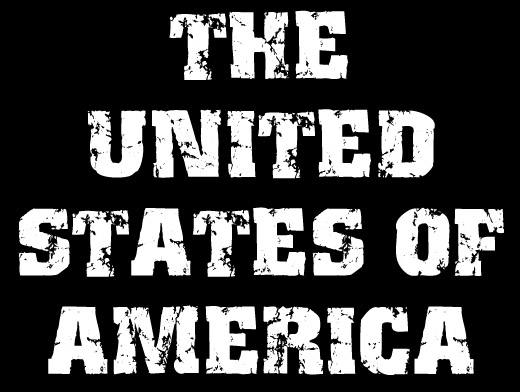
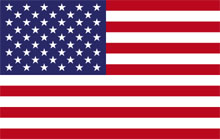

-Lawrence Dennis, 1940
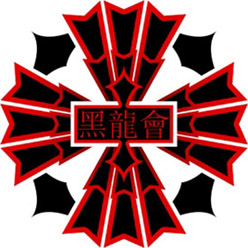

-Marcus Garvey

--slogan of the Carlos Cook's organization the African Nationalist Pioneer Movement.


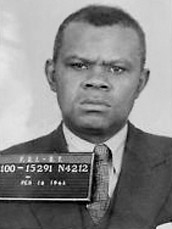

'At 131st Street and Lenox Avenue I was attracted by a large crowd applauding a woman speaker. One of the Negroes exclaimed': "Somebody has got to do the job and Hitler is doin' it".


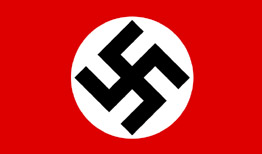

'In the end the most immediate way Hitler influenced musical life was by raising the quality of performances to the highest possible standard. His primary means was through liberal financing of orchestras, soloists, instrumentalists and opera producers. His munificence put him on a level with some of the great patrons of history. He undoubtedly had an excellent ear for conducting talent... [he] selected conductors with as much care as he chose military commanders.'
(Hitler and the Power of Aesthetics by Frederic Spotts, pg. 287, (c)2003)
(Carl Orff, Through Music to the Self : How to Appreciate and Experience Music Anew (1979) by Peter Michael Hamel, p. 18)
O Fortuna
velut luna (like the moon)
statu variabilis (you are changeable)
semper crescis (ever waxing)
aut decrescis; (and waning;)
vita detestabilis (hateful life)
nunc obdurat (first oppresses)
et tunc curat (and then soothes)
ludo mentis aciem, (as fancy takes it)
egestatem, (poverty)
potestatem (and power)
dissolvit ut glaciem. (it melts them like ice.)
Sors immanis (Fate - monstrous)
et inanis, (and empty)
rota tu volubilis, (you whirling wheel)
status malus, (you are malevolent)
vana salus (well-being is vain)
semper dissolubilis, (and always fades to nothing)
obumbrata (shadowed)
et velata (and veiled)
michi quoque niteris; (you plague me too;)
nunc per ludum (now through the game)
dorsum nudum (I bring my bare back)
fero tui sceleris. (to your villainy.)
Sors salutis (Fate is against me)
et virtutis (in health)
michi nunc contraria, (and virtue)
est affectus (driven on)
et defectus (and weighted down)
semper in angaria. (always enslaved.)
Hac in hora (So at this hour)
sine mora (without delay)
corde pulsum tangite; (pluck the vibrating strings;)
quod per sortem (since Fate)
sternit fortem, (strikes down the string)
mecum omnes plangite! (everyone weep with me!)



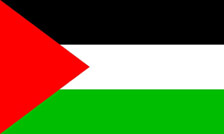

'Long live Zapata - hero of the Mexican revolution - 1915
Long live Abd al Kader al-Husseini - hero of the Palestinian revolution - 1948

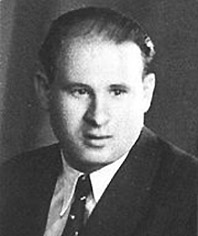


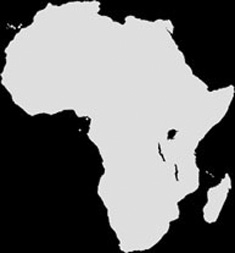
'After the establishment of new transportation and communication methods in the country, the Italians also started to set up new factories, which in turn made due contribution in enhancing trade activities. The newly opened factories produced buttons, cooking oil, and pasta, construction materials, packing meat, tobacco, hide and other household commodities. In the year 1939, there were around 2,198 factories and most of the employees were Eritrean citizens, some even moved from the villages to work in the factories. The establishment of industries also made an increase in the number of both Italians and Eritreans residing in the cities...'
'230°
Battagliome
Della Divisione
Sabavda'.]
6 Reggimento Fanteria Coloniale
XXII Battaglione Eritreo
"Ambessa".]

'If you want us to end our armed struggle, then you better lower the Ethiopian flag and raise up the Eritrean flag.'




-Philip Johnson


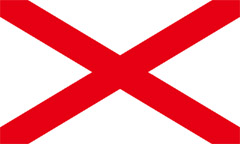








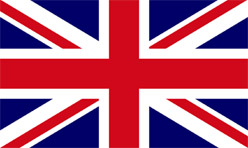

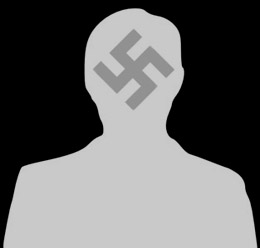
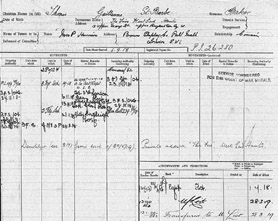







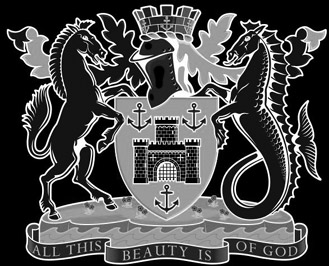




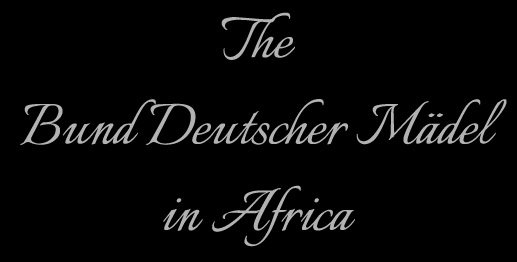

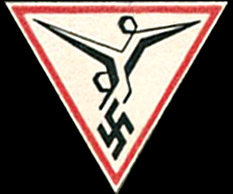



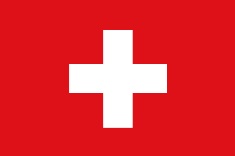

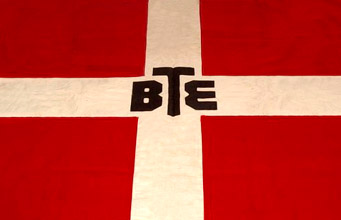








-James Larratt Battersby, 1952


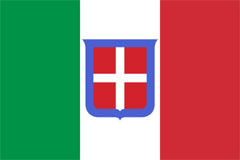

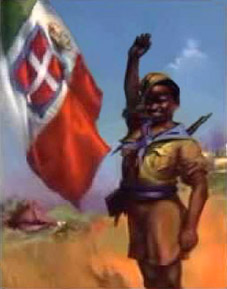


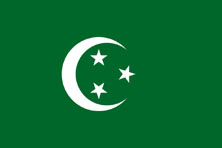

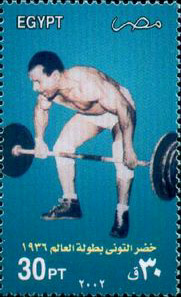





"All my life I have enjoyed sports of all kinds, and when I chanced to come upon motor cycling I took to it at once, and loved going at speed. And I've always loved mechanical things – anything with wheels. When I was quite a tiny tot I would prefer playing with toy engines rather than dolls.
Fay Taylour
File ref KV 2/2143-2144





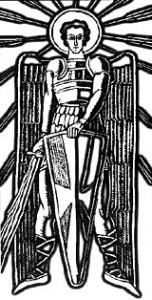
One of my favorites, a woodcut called 'Nasterea' (Birth), of the Archangel Michael guarding the infant Corneliu Codreanu in his crib.]















[Histories and Memories: Migrants and Their History in Britain, pg. 68, Kathy Burrel and Panikos Panayi]


-|-
Third Reich Philatelia
-|-
-|-
Third Reich Ephemera
-|-
-|-
Third Reich Awards
-|-
-|-
Third Reich Miscellanea
-|-
-|-
Third Reich Identification Books
-|-
-|-
Third Reich Currency
-|-
-|-
The Great War
-|-
-|-
Hand of Pandora
-|-
-|-
Waffen-SS Technical Information -|-
-|-
The European Volunteer Movement in WWII -|-
-|-
Copyright -|-